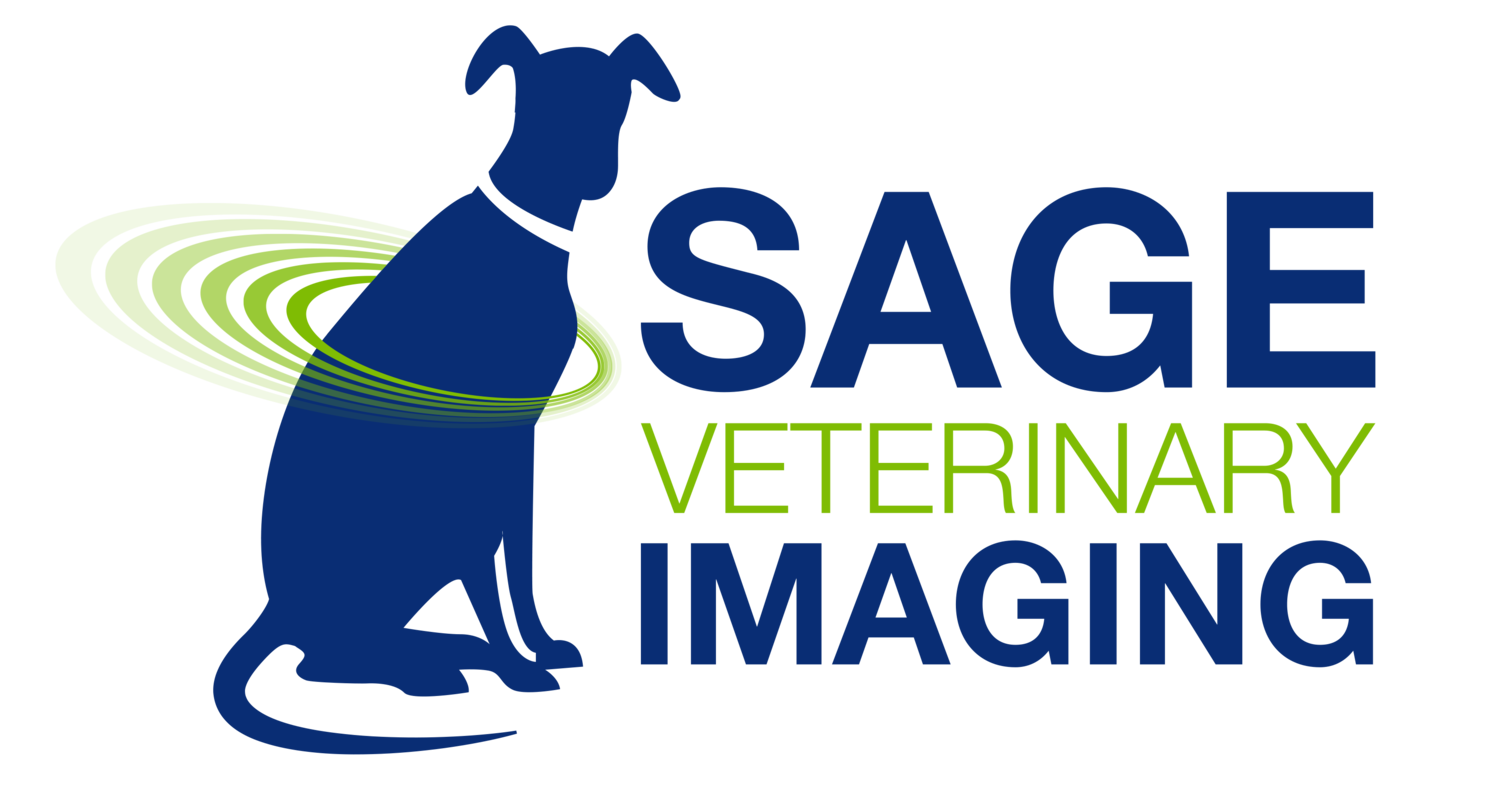The Pet Parent’s Guide to Intestinal Blockages in Cats & Dogs
If your dog is refusing to eat, it could be a warning sign of an intestinal blockage or GI issue.
Picture this: you’re cruising down the highway when suddenly—brake lights. A complete standstill. You can’t see what’s causing the holdup, but you know one thing: if it doesn’t clear soon, the whole highway system is in trouble. That’s exactly what happens during an intestinal blockage in cats and dogs.
Something—maybe a toy, a clump of fur, or a bit of bone—gets lodged in the digestive tract. Food and gas can’t pass. Pressure builds. Pain increases. And if left untreated, this type of gastrointestinal obstruction can become life-threatening.
At Sage Veterinary Imaging (SVI), we use advanced imaging tools like CT and ultrasound to diagnose issues quickly and accurately, helping your veterinary team make confident decisions quickly.
In this blog, we’ll cover:
What causes intestinal blockages in cats and dogs
How to tell if your pet has a bowel obstruction
How veterinarians diagnose and treat these issues
When to seek advanced imaging to guide the next steps
If your pet stops acting like themselves, don’t wait. Let’s take a closer look at what could be going on inside and how to get things moving again.
What Causes Intestinal Blockages in Cats and Dogs?
Cats love to chew on string, but swallowing it can lead to GI problems.
Curiosity may be cute…but it’s often the culprit with cats and dogs. Still, there are other cases where the cause of an intestinal blockage is actually internal (not from swallowing things).
Here are the most common causes of GI obstruction in pets:
Foreign body ingestion – Toys, bones, socks, string, and hair ties are common offenders. Puppies and curious dogs are especially at risk.
Hairballs – In cats, especially long-haired breeds or excessive groomers, hair can accumulate and cause a blockage.
Tumors or growths – Both benign and malignant, these can obstruct or narrow the intestines. GI cancers are more common in senior pets.
Strictures or hernias – Structural defects or scar tissue may create areas where digestion slows or stops.
Severe constipation or parasites – Though less common, buildup or infestation can lead to impaction, especially in older or immunocompromised animals.
No matter the cause, a blockage requires prompt attention to avoid complications like perforation, sepsis, or long-term GI damage.
How to Tell if Your Pet Has a Bowel Obstruction
Symptoms depend on the blockage’s location and severity, but these are the most common red flags:
Frequent vomiting (especially after eating or drinking)
Loss of appetite
Lethargy or weakness
Straining or little to no bowel movements
Abdominal bloating or discomfort
Behavioral changes like hiding, whining, or restlessness
For example, a cat who usually meets you at the door may disappear under the bed. A dog who devours dinner might circle the bowl and walk away. These shifts in behavior may seem minor but they often signal something serious.
If you notice one or more of these signs, it’s time to call your vet. The next step? Diagnosis.
Diagnosing Intestinal Blockages in Pets
Abdominal ultrasounds are often used to detect gastrointestinal blockages in dogs.
You can’t confirm a blockage based on symptoms alone. Your vet will use a combination of clinical exams and diagnostics:
Physical exam & history – A hands-on exam and questions about behavior or possible ingestion help identify pain and narrow the cause.
X-rays or ultrasound – These can reveal gas buildup, distended intestines, or visible foreign objects. However, not all materials (like cloth or plastic) are easily seen.
Advanced imaging – When initial tests are inconclusive, CT scans or fluoroscopy at Sage Veterinary Imaging provide a detailed internal view. These high-res tools can distinguish between partial blockages, inflammation, growths, or structural defects.
Imaging doesn’t just confirm a diagnosis (which is the biggest goal), it guides your vet’s next move with confidence and clarity.
Treatment for Gastrointestinal Obstruction in Pets
Once a blockage is confirmed, treatment depends on the cause and severity. Common options include:
Surgery – Often the best route for complete blockages or foreign objects. Timely intervention is critical to prevent rupture or long-term harm.
Endoscopy – A minimally invasive option for retrieving objects from the stomach or upper intestines using a camera and specialized tools. Not all clinics offer this, but it can be ideal in select cases.
Supportive care – For partial blockages, soft obstructions, or early-stage issues, some pets respond well to fluids, pain relief, and monitoring.
Treating underlying causes – If the issue stems from a tumor, hernia, or chronic GI condition, long-term treatment or referral to a specialist may be needed.
At Sage Veterinary Imaging, our diagnostics support your vet in choosing the safest, most effective plan—whether that means surgery, continued monitoring, or something in between.
When to Seek Advanced Imaging for Your Pet
With fast diagnosis and treatment, most pets make a full recovery from intestinal blockages
Not every stomach issue calls for a CT scan—but there are times when advanced imaging makes all the difference:
Symptoms persist but initial tests are inconclusive
Surgery is being considered and needs confirmation
The cause of obstruction isn’t clear
Accuracy is essential for treatment planning
Our team at Sage Veterinary Imaging partners closely with your vet to deliver fast, collaborative diagnostics, reducing uncertainty and improving outcomes for pets and their parents.
Fast Answers Can Save Lives
An intestinal blockage in cats and dogs can escalate quickly, but with early recognition, accurate diagnostics, and the right treatment, most pets recover fully and return to their normal selves.
If your veterinarian suspects a gastrointestinal obstruction, don’t wait. Advanced imaging can reveal what’s really going on and help guide the safest, most effective path forward.
Reach out today to learn how we partner with pet parents and veterinary teams across the region to deliver clarity, confidence, and compassionate care.




